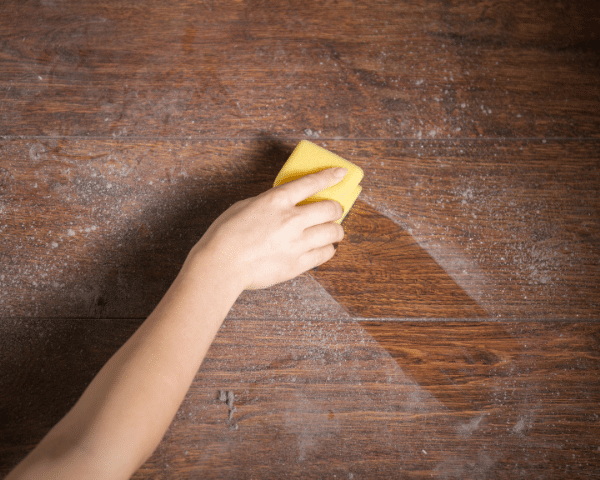
No matter how regularly you clean, does it seem like your home is a dust magnet? Several factors can contribute to a home being dustier than usual:
- Lack of regular cleaning: If you don’t clean your home frequently, dust can accumulate on surfaces, floors, and furniture, leading to a dustier environment.
- Poor ventilation: Insufficient airflow and ventilation in your home can contribute to the accumulation of dust particles. Without proper air circulation, dust tends to settle and linger in the air.
- Presence of pets: Pets, especially those with fur or feathers, can shed dander and hair, which contribute to dust accumulation. Their activities can also stir up dust particles, making the environment dustier.
- Open windows and doors: Keeping windows and doors open allows dust from outside to enter your home. Factors like wind, construction, or nearby roads can bring in more dust particles, making the indoor environment dustier.
- Renovations or remodeling: Home improvement projects can generate significant amounts of dust, especially when sanding, drilling, or demolishing materials. The dust created during these activities can spread throughout your home and settle on surfaces.
- Clogged AC: If your HVAC system’s air filters are not regularly cleaned or replaced, they can become clogged with dust, allowing more particles to circulate in your home.
- Outdoor factors: Environmental conditions such as dry and windy weather can increase the amount of dust in the air, which can find its way into your home.
To address a dustier home, you can take the following measures:
- Use a microfiber: They hold more dirt and work much better than a feather duster.
- Improve ventilation: Ensure proper airflow by opening windows when weather permits, using fans or air purifiers, and keeping ventilation systems clean and well-maintained.
- Groom pets regularly: Brushing and bathing your pets can help reduce shedding and dander, minimizing the amount of dust they contribute to your home.
- Seal gaps and cracks: Inspect your home for any openings that allow dust to enter, such as gaps around windows, doors, or utility openings. Seal these gaps to prevent dust infiltration.
- Use high-quality air filters: Install and regularly replace air filters in your HVAC system to trap dust particles and improve indoor air quality.
- Control indoor humidity: Maintain optimal humidity levels in your home to prevent excessive dust accumulation. Using a dehumidifier or humidifier can help achieve a balanced humidity level.
- Limit outdoor dust entry: Use doormats, shoe racks, or shoe removal policies to minimize the amount of dust brought in from outside.
By addressing these factors and implementing preventive measures, you can reduce the dustiness in your home and maintain a cleaner indoor environment.




